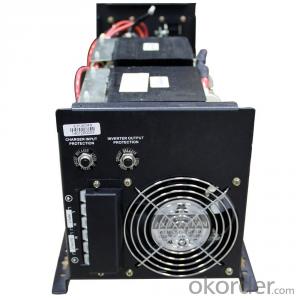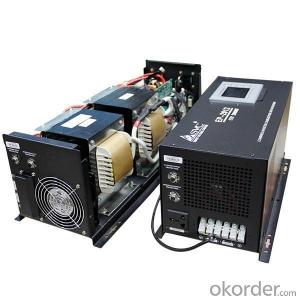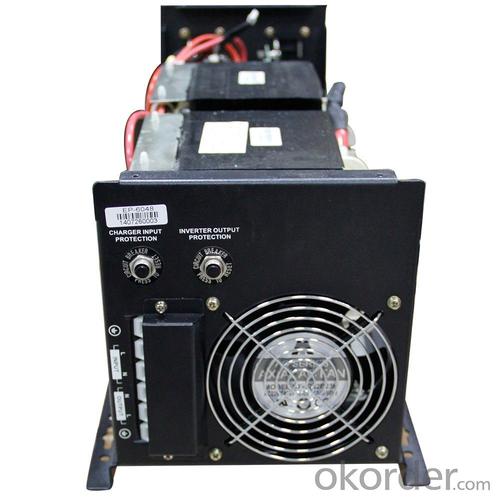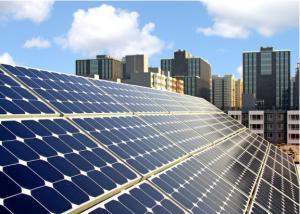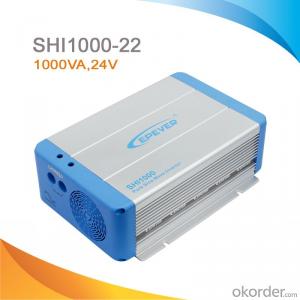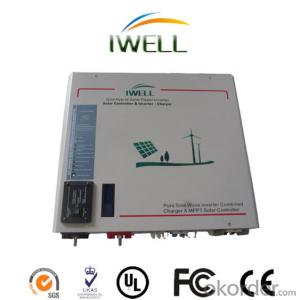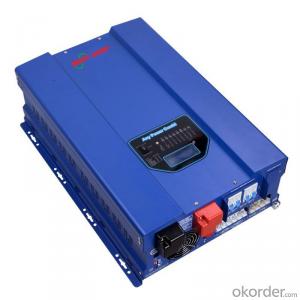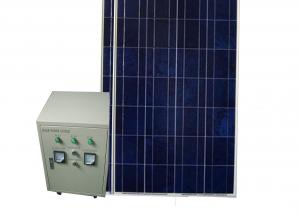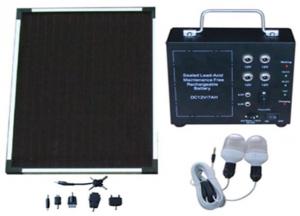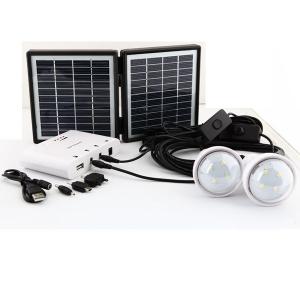Sun Solar Energy Systems Low Frequency Inverter Pure Sine Wave (Remote Control) 1000W 12V 220V Inverter
- Loading Port:
- China main port
- Payment Terms:
- TT OR LC
- Min Order Qty:
- 20 carton
- Supply Capability:
- 10000 carton/month
OKorder Service Pledge
OKorder Financial Service
You Might Also Like
Remote Control Low Frequency Pure Sine Wave 1000W 12V 220V Inverter
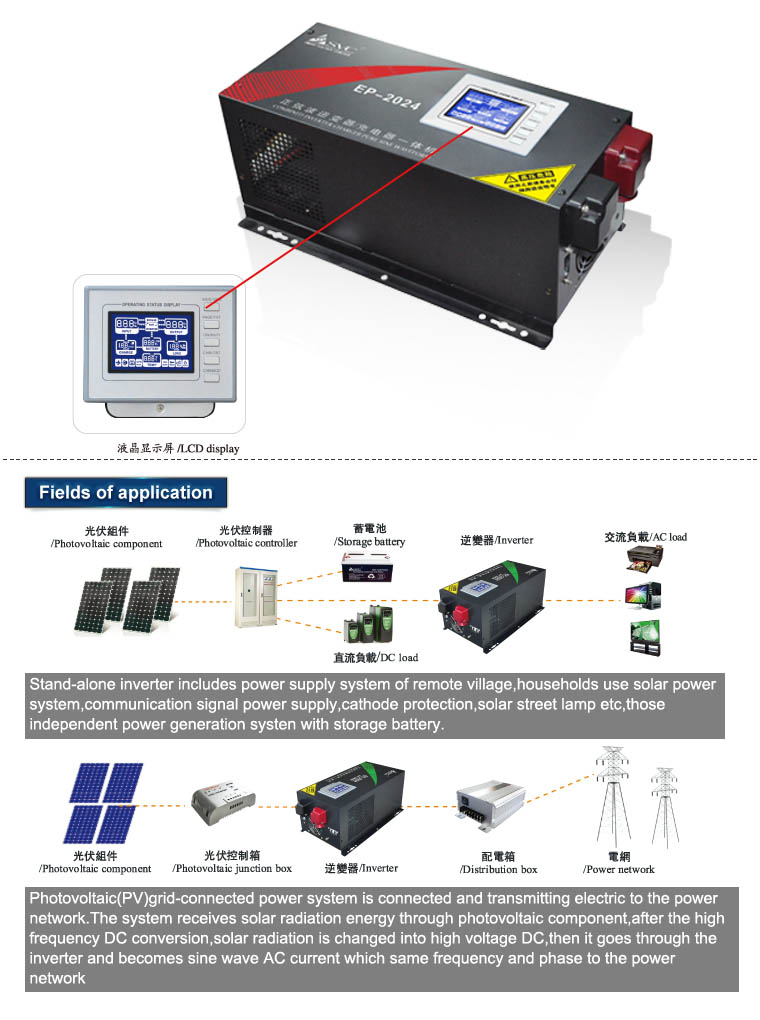
Product Description

| Model | EP-1012 | EP-2024 | EP-3024 | EP-4048 | EP-6048 |
| Rated power | 1000W | 2000W | 3000W | 4000W | 6000W |
| INPUT | |||||
| Input voltage range | 185~265VAC | ||||
| OUTPUT | |||||
| Input voltage range | 220VAC/230VAC | ||||
| Output frequency | Batt. Mode:50±0.5Hz Acmode:48~54Hz(50Hz) or 58~64Hz, Same as AC | ||||
| Output wave form | Sine wave (Batt. mode) | ||||
| Transfer time | 10ms(Typical) | ||||
| PROTECTION | |||||
| Overload protection | (100%<Load<120%)±10%:Auto shutdown in 2 mins;(120%<Load<140±10%;Auto shutdown in 60 Secs;(140%<Load)±10%:Auto shutdown in 20 Secs; | ||||
| Output short circuit protection | Yes | ||||
| Breaker | Input:15A/Output:10A | Input:30A / Output:15A | Input:35A / Output:20A | Input:40A / Output:30A | |
| BATTERY | |||||
| Rating charging current(Max.) | 45A | ||||
| Nominal DC input voltage | 12V | 24V | 48V | ||
| 20V/40V | |||||
| PHYSITAL | |||||
| (kg) / Net weight (kg) | 22.8 | 27.6 | 32.4 | 38.2 | 44.5 |
| (mm) / Unit dimention (mm) | 468(L)*224(W)*212(H)mm | 644(L)*224(W)*212(H)mm | |||
| ENVIRONMENT | |||||
| Environment of performance | Temperature 0℃~40℃, Humidity 20%~90% | ||||

Ep series is sine wave low frequency inverter, which is specifically designed for home appliances. It is equipped with a big LCD screen so all information is displayed in detail, which makes it more convenient to use. Charging current of the inverter is adjustable from 5A to 45A and you can also select different charging voltage to charge different types of batteries so batteries are under great protection.
Feature:
1. Suitable for all electrical equipments
2. Large LCD display for more detailed content
3. CPU controlled; fast transfer time
4. Intelligent battery management, prolonging the service life of the battery
5. Complete protection function, high reliability
6. Can provide high current charge
7. Can match different types of batteries
8. Disassembled LCD box which can make the operation in a distance of 15 meters
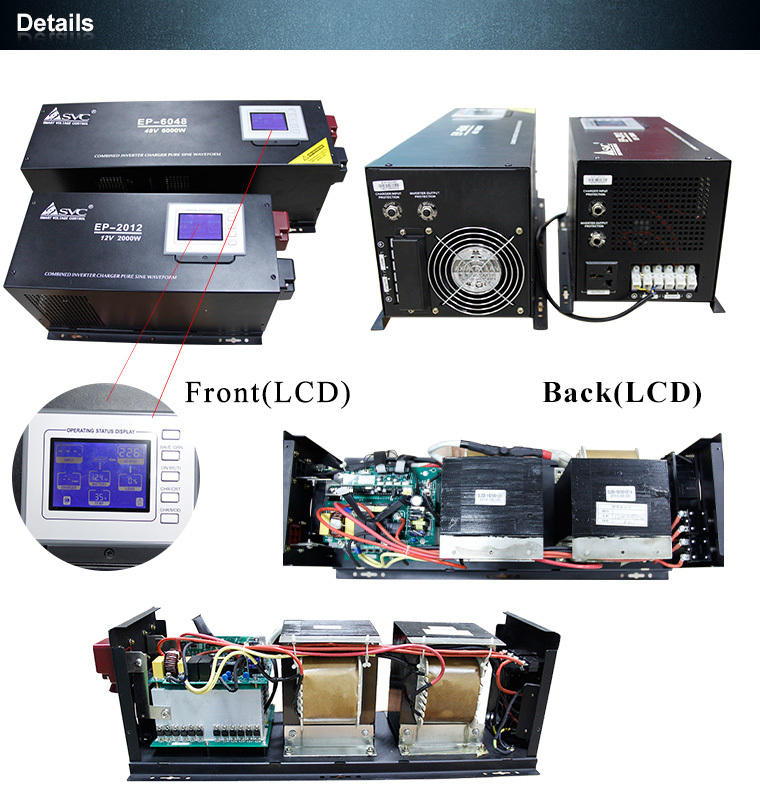
- Q: Can solar energy systems be used for powering public transportation systems like buses or trains?
- Yes, solar energy systems can indeed be used to power public transportation systems such as buses or trains. Solar panels can be installed on the roofs of buses or along railway tracks to harness sunlight and convert it into electricity. This renewable energy source can help reduce reliance on fossil fuels, lower emissions, and make public transportation more sustainable and environmentally friendly.
- Q: How do solar energy systems impact the reduction of energy transmission losses?
- Solar energy systems help reduce energy transmission losses by generating electricity directly at the point of consumption. This eliminates the need for long-distance transmission of electricity, which can result in significant losses due to resistance in power lines. By generating electricity on-site, solar energy systems minimize transmission distances, reducing energy losses and increasing overall efficiency.
- Q: Can solar energy be used for industrial processes?
- Yes, solar energy can be used for industrial processes. Solar thermal technology can be employed to generate high-temperature heat required for various industrial applications such as heating, drying, melting, and even powering steam turbines for electricity generation. Additionally, photovoltaic systems can provide renewable electricity to power industrial machinery and equipment. The use of solar energy in industrial processes can help reduce greenhouse gas emissions and dependence on fossil fuels, making it a sustainable and environmentally friendly option.
- Q: Can solar energy systems generate enough electricity to power a home?
- Yes, solar energy systems can generate enough electricity to power a home. The amount of electricity produced by a solar energy system depends on various factors such as the size and efficiency of the system, the geographical location, weather conditions, and the energy consumption patterns of the household. In general, a well-designed and properly installed solar energy system can generate enough electricity to power a typical home. The system consists of solar panels that capture sunlight and convert it into electricity through the photovoltaic effect. This electricity can be used to meet the energy needs of a home, including powering appliances, lights, heating and cooling systems, and other electrical devices. To ensure sufficient electricity production, it is important to consider the energy requirements of the home and design a solar system accordingly. This includes determining the appropriate number and size of solar panels, as well as incorporating energy storage solutions such as batteries to store excess electricity for use during cloudy days or at night. Moreover, advancements in solar technology, such as high-efficiency solar panels and smart inverters, have significantly improved the energy output of solar systems. Additionally, net metering programs in many areas allow homeowners to sell excess electricity back to the grid, further enhancing the economic viability of solar energy systems. While solar energy systems can generate enough electricity to power a home, it is crucial to assess the specific circumstances of each home to determine the feasibility and efficiency of installing such a system. Consulting with a reputable solar energy provider and conducting a thorough assessment will help homeowners make informed decisions about harnessing solar power for their homes.
- Q: Can solar energy systems be used in areas prone to earthquakes?
- Yes, solar energy systems can be used in areas prone to earthquakes. While earthquakes can pose a risk to any infrastructure, including solar panels, proper design and installation can mitigate potential damage. Reinforced mounting structures and flexible connectors can help absorb vibrations and prevent panels from dislodging. Additionally, solar energy systems are decentralized, meaning that even if some panels are affected by an earthquake, the rest of the system can continue to operate. Overall, with careful planning and engineering, solar energy systems can be used effectively in earthquake-prone areas.
- Q: Can solar energy systems be used for charging electric vehicles?
- Yes, solar energy systems can be used for charging electric vehicles. Solar panels can convert sunlight into electricity, which can then be used to charge the batteries of electric vehicles. This is a sustainable and environmentally friendly way to power electric vehicles, reducing reliance on fossil fuels and lowering carbon emissions.
- Q: What are the advantages of solar energy systems?
- Solar energy systems offer several benefits. To begin with, solar energy is an endless source of power, relying on the sun's continuous existence. This stands in stark contrast to finite fossil fuels, which are depleting rapidly. Furthermore, solar energy is environmentally conscious. Unlike fossil fuels, solar energy systems do not release harmful greenhouse gases or pollutants that contribute to climate change and air pollution. This makes solar energy a clean and sustainable alternative that aids in reducing our carbon footprint and countering the adverse effects of global warming. Moreover, solar energy systems can significantly decrease electricity expenses. Once the initial investment in solar panels is made, the cost of harnessing solar energy remains relatively low. Solar energy is essentially free, with the only expenses being equipment maintenance and occasional repairs. This can result in substantial long-term savings on energy bills, especially considering the continuous rise in traditional electricity costs. Additionally, solar energy systems promote energy independence. By generating your own electricity, you become less reliant on utility companies and the fluctuating prices of fossil fuels. This independence enhances energy security, as solar energy systems are not susceptible to supply disruptions or price fluctuations caused by geopolitical tensions or natural disasters. Lastly, the installation of solar energy systems stimulates local economies and job creation. The solar industry has experienced significant growth, leading to the creation of numerous jobs in manufacturing, installation, and maintenance. This not only boosts the economy but also provides employment opportunities in a rapidly expanding sector. In conclusion, the benefits of solar energy systems are manifold. From being a renewable and environmentally friendly power source to reducing electricity expenses, providing energy independence, and generating jobs, solar energy proves to be a viable and sustainable solution for our energy needs.
- Q: Can solar energy systems be used in areas with limited access to sunlight due to tall nearby buildings or trees?
- Solar energy systems can still be utilized in areas with limited sunlight due to tall buildings or trees. Although shading can reduce solar panel efficiency, there are various solutions to overcome this obstacle. To begin, solar panels can be strategically placed on rooftops or other elevated structures to minimize the impact of shading. By positioning the panels in areas that receive the most sunlight throughout the day, such as the southern side of a building or open spaces, shading effects can be minimized. Furthermore, advancements in solar technology have resulted in the creation of more efficient and flexible solar panels. Some panels are specifically designed to function in low-light conditions, enabling them to generate electricity even in areas with limited sunlight. Moreover, the use of solar tracking systems can significantly improve the performance of solar energy systems in shaded areas. These systems allow the solar panels to follow the sun's movement throughout the day, ensuring they are constantly exposed to the maximum sunlight available. Lastly, it is important to note that a comprehensive site assessment and professional design can help determine the best options for solar energy systems in shaded areas. By thoroughly analyzing the site conditions and considering factors such as shading intensity, angle of incidence, and available space, a customized solar energy system can be designed to optimize energy generation, even in areas with limited sunlight access.
- Q: What is the difference between a solar power purchase agreement (PPA) and a solar lease?
- A solar power purchase agreement (PPA) involves a contractual agreement between a solar energy provider and a consumer, where the consumer agrees to purchase the electricity generated by the solar system at a predetermined rate over a specified period of time. On the other hand, a solar lease is a contract that allows a consumer to lease a solar energy system from a provider, paying a fixed monthly fee to use the system and benefit from the electricity it generates. The main difference between the two is that in a PPA, the consumer only pays for the electricity they consume, while in a solar lease, they pay a fixed monthly amount regardless of the amount of electricity generated. Additionally, in a PPA, the provider is responsible for the installation, maintenance, and operation of the solar system, whereas in a solar lease, the consumer is typically responsible for the maintenance and operation.
- Q: What is the efficiency of a solar energy system?
- The percentage of sunlight that a solar energy system is able to convert into usable electricity is what we refer to as its efficiency. This measure shows how effectively the system can harness and convert solar energy into electrical power. The efficiency of a solar energy system can vary based on several factors, including the type of solar panels used, the location and orientation of the panels, weather conditions, and the overall design and quality of the system. Commercially available solar panels typically have efficiencies ranging from 15% to 22%. This means that only a portion of the sunlight that reaches the panels is converted into electricity, while the rest is either reflected or lost as heat. However, ongoing advancements in solar technology have resulted in experimental panels that have achieved efficiencies exceeding 40%. It is worth noting that the efficiency of a solar energy system does not solely determine its overall effectiveness. Other factors, such as the cost, durability, and maintenance requirements of the system, also play a significant role in determining its overall value. Additionally, maximizing the efficiency of a system can be achieved through careful installation optimization, regular panel cleaning, and ensuring minimal obstructions to sunlight. To summarize, the efficiency of a solar energy system measures its ability to convert sunlight into electricity. While commercially available panels typically have efficiencies between 15% and 22%, ongoing technological advancements continue to improve this figure. However, other factors like cost, durability, and maintenance requirements should also be considered when evaluating the effectiveness of a solar energy system.
Send your message to us
Sun Solar Energy Systems Low Frequency Inverter Pure Sine Wave (Remote Control) 1000W 12V 220V Inverter
- Loading Port:
- China main port
- Payment Terms:
- TT OR LC
- Min Order Qty:
- 20 carton
- Supply Capability:
- 10000 carton/month
OKorder Service Pledge
OKorder Financial Service
Similar products
Hot products
Hot Searches
Related keywords
